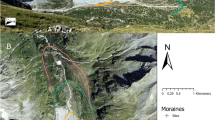Abstract
Abundance indices from transect surveys for species restricted to prairies and barrens were correlated to test the degree to which these species of conservation concern co-occur. In 56 pair-wise tests among 15 species by subregion, 29 (52%) correlated significantly, all but one positively, and only 17 (37%) of 46 tests involving samples of >60 individuals for each species were non-significant. The species producing the most significant interspecific correlations in prairie were Speyeria idalia (five of ten tests) and Atrytone arogos (four of six tests); in barrens, Euchloe olympia (seven of eight tests) and Hesperia l. leonardus (six of eight tests). Lycaeides melissa samuelis, the butterfly receiving the most conservation attention in these habitats, produced few significant correlations. To explicate these patterns of co-occurrence, case histories were compiled for these species at sites of comparable vegetation by subregion. No management type was clearly favourable for all specialists of a given habitat, although some managements were favourable for more species than others (e.g. haying vs. burning in prairie). Analysis of variance of management at these sites produced more results with significant effects than did correlations of the species' abundance indices with habitat patch size. These results were inconsistent with prevailing ecological theory about the natural maintenance of these habitats; conversely, a single unified (alternative) theory of ecosystem management could not be inferred from these results. These patterns of butterfly co-occurrence suggest an alternative approach to ecosystem conservation that focuses on subsets of species native to a particular ecosystem. These smaller species assemblages significantly co-occur in range, habitat, and management tolerance, and may be amenable to monitoring with indicator species.
Similar content being viewed by others
References
Borgerding, E.A., Bartelt, G.A. and McCown, W.M. (1995) {tiThe future of pine barrens in northwest Wisconsin: a workshop summary}. PUBL-RS-913-94. Madison, Wisconsin: Department of Natural Resources.
Curtis, J.T. (1959) The vegetation of Wisconsin: an ordination of plant communities. Madison: University of Wisconsin Press.
Cushman, J.H. and Murphy, D.D. (1993) Conservation of North American lycaenids–an overview. In Conservation biology of Lycaenidae(Butterflies) (T.R. New, ed.) pp. 37–44. Gland: IUCN.
Fleischner, T.L. (1994) Ecological costs of livestock grazing in western North America. Conserv. Biol.8, 629–44.
Gibson, D.J. and Hulbert, L.C. (1987) Effect of fire topography and year-to-year climatic variation on species composition in tallgrass prairie. Vegetatio 72, 175–85.
Gordon, D.R. (1996) Experimental translocation of the endangered shrub Apalachicola rosemary Conradina glabrato the Apalachicola Bluffs and Ravines Preserve, Florida. Biol. Conserv.77, 19–26.
Grigore, M.T. and Tramer, E.J. (1996) The short-term effect of fire on Lupinus perennis(L.). Nat. Areas J. 16, 41–8.
Grumbine, R.E. (1994) What is ecosystem management? Conserv. Biol. 8, 27–38.
Herkert, J.R. (1994) Breeding bird communities of midwestern prairie fragments: the effects of prescribed burning and habitat-area. Nat. Areas J. 14, 128–35.
Howe, H.F. (1994) Managing species diversity in tallgrass prairie: assumptions and implications. Conserv. Biol. 8, 691–704.
Kirby, P. (1992) Habitat management for invertebrates: a practical handbook. Sandy: Royal Society for the Protection of Birds.
Leach, M.K. and Givnish, T.J. (1996) Ecological determinants of species loss in remnant prairies. Science 273, 1555–8.
NABA (North American Butterfly Association) (1995) Checklist & English names of North American butterflies. Morristown, NJ: NABA.
Nuzzo, V.A. (1986) Extent and status of midwest oak savanna: presettlement and 1985. Nat. Areas J. 6, {pp6–36}.
Risser, P.G., Birney, E.C., Blocker, H.D., May, S.W., Parton, W.J.and Wiens, J.A. (1981) The true prairie ecosystem. Stroudsburg: Hutchinson Ross.
Swengel, A.B. (1994) Conservation of the prairie-savanna butterfly community. In Proc. N. Am. conf. on savannas and barrens(J.S. Fralish, R.C. Anderson, J.E. Ebinger and R. Szafoni, eds) pp. 133–8. Normal: Illinois State University.
Swengel, A.B. (1995) Observations of spring larvae of Lycaeides melissa samuelis(Lepidoptera: Lycaenidae) in central Wisconsin. Great Lakes Entomol. 28, 155–70.
Swengel, A.B. (1996a) Effects of fire and hay management on abundance of prairie butterflies. Biol. Conserv. 76, 73–85.
Swengel, A.B. (1996b) Observations of Incisalia irus(Lepidoptera: Lycaenidae) in central Wisconsin 1988–95. Great Lakes Entomol. 29, 47–62.
Swengel, A.B. (1997) Effects of management on butterfly abundance in tallgrass prairie and pine barrens. Biol. Conserv. (in press).
Swengel, A.B. and Swengel, S.R. (1996) Factors affecting abundance of adult Karner blues Lycaeides melissa samuelis(Lepidoptera: Lycaenidae) in Wisconsin barrens 1987–95. Great Lakes Entomol. 29, 93–105.
Thomas, C.D. and Harrison, S. (1992) Spatial dynamics of a patchily distributed butterfly species. J. Anim. Ecol. 61, 437–46.
Thomas, C.D. and Jones, T.M. (1993) Partial recovery of a skipper butterfly (Hesperia comma) from population refuges: lessons for conservation in a fragmented landscape. J. Anim. Ecol. 62, 472–81.
Author information
Authors and Affiliations
Rights and permissions
About this article
Cite this article
Swengel , A.B., Swengel, S.R. Co-occurrence of prairie and barrens butterflies: applications to ecosystem conservation. Journal of Insect Conservation 1, 131–144 (1997). https://doi.org/10.1023/A:1018495428991
Issue Date:
DOI: https://doi.org/10.1023/A:1018495428991




